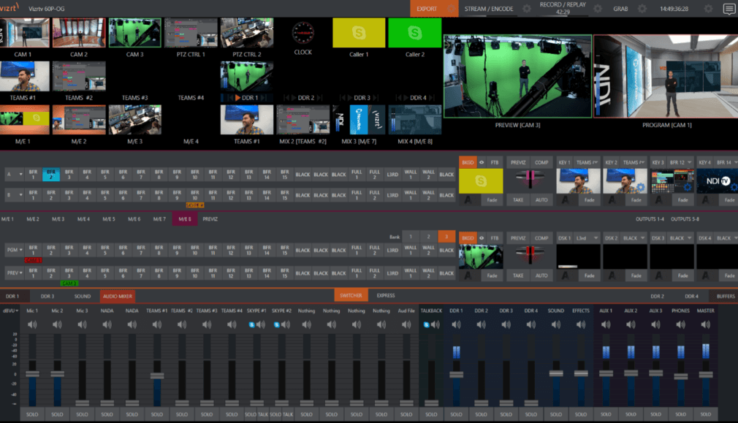Buyers’ Guide: Live Streaming Software
By Jennifer P
In Anthony Burokas’s “Buyers’ Guide: Live Streaming Software” for StreamingMedia, various software options for live-switched video production are explored. Burokas outlines four primary methods: using multiple hardware devices, all-in-one tablet-based solutions, cloud-based platforms, and standalone production software on computers. He emphasizes the importance of choosing hardware that suits the software-based streaming approach, allowing scalability based on production needs. Criteria for selecting a software solution include user preference, workflow compatibility, and trial periods for hands-on evaluation before making a final decision.
Vizrt TriCaster
The Vizrt TriCaster, a computer-based solution developed by NewTek and now fully integrated into the Vizrt brand, offers comprehensive live production software primarily tied to custom Windows hardware. It boasts features like multiple inputs and outputs, mix/effects busses, an audio mixer, media buffers, keyers, virtual sets, and more, making it suitable for various production needs. TriCaster’s standardized interface and availability of experienced operators make it a reliable choice for live events. While pricing may seem steep initially, it offers a cost-effective turnkey solution compared to custom-built PCs and third-party software integration. Its custom configuration ensures stability, avoiding potential issues with auto-updates. TriCaster also offers cloud-based options like TriCaster Vectar, enabling remote collaboration and multi-operator setups for complex productions.
OBS
OBS Studio, a free and open-source live streaming and recording software, offers versatile functionality across Mac, PC, and Linux platforms. With high-performance video/audio capturing and mixing features, users can create customizable scenes with multiple sources, including webcams, images, and text. The software’s modular interface allows for extensive configuration options, while Studio Mode enables scene previewing before going live. Streamlabs OBS, a variant of OBS, caters to professional live streamers with integrated capabilities such as viewer comments and automated highlights, enhancing audience engagement. With both free and paid tiers available, Streamlabs OBS provides additional features like multicasting capability and support for remote guests, along with various streamer-centric tools for further customization and interaction with viewers.
Telestream Wirecast
Telestream Wirecast is a longstanding live production solution available for both Mac and Windows, offering subscription plans priced at $35 per month for the Studio version and $46 per month for the Pro version. Wirecast, currently in version 16.2, boasts features such as unlimited live camera sources, NDI support, PTZ control, layer-based compositing, ISO recordings, virtual camera/microphone, and built-in multistreaming capabilities. The software includes tools like chromakey, animated graphics, scoreboard features, social media comment integration, and multiview templates. While the Studio version supports two remote callers and one stream out, the Pro version expands upon this with built-in streaming to multiple destinations, support for up to seven remote guests, sports production tools, multi-track audio recording, and a multiviewer output. Wirecast’s unique layer design distinguishes it from other interfaces, catering to producers who prefer this approach. Despite the absence of a downloadable trial version, Wirecast’s subscription model allows users to explore its features at a relatively low cost.
vMix
vMix, a Windows-only application developed by StudioCoast Pty Ltd., offers a unique approach to live production with multi-layered “scenes” that can incorporate various sources such as cameras, titles, overlays, and more. Unlike subscription-based models, vMix offers different tiers for purchase, ranging from Basic HD to Pro, with prices varying from $60 to $1,200. Recent additions include a $50 monthly Max license of the Pro version, providing top-tier capabilities for one event. With a 60-day trial period and low initial costs, vMix allows users ample time to explore its features. Key features include support for up to eight remote callers via vMix Call, integration with Zoom, compatibility with control surfaces and third-party apps, and capabilities for 4K instant replay and SRT outputs. While vMix offers recommended hardware specifications, users are responsible for sourcing and building their machines and I/O hardware. Additionally, vMix can leverage the GPU for various live production processes, necessitating higher hardware configurations for demanding tasks.
Read the full blog post by Anthony Burokas for StreamingMedia HERE
Learn more about Vizrt TriCasters HERE
Learn more about Telestream Wirecast HERE
Learn more about JVC vMix Turnkey Solutions HERE

